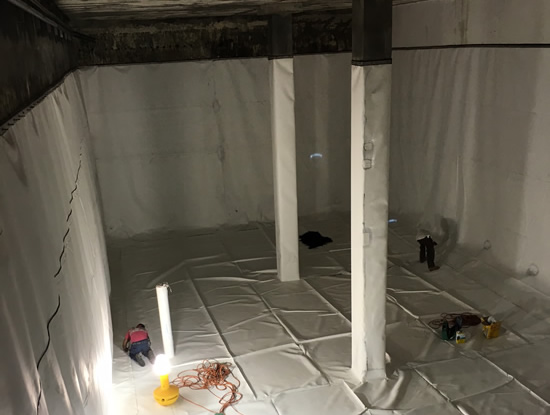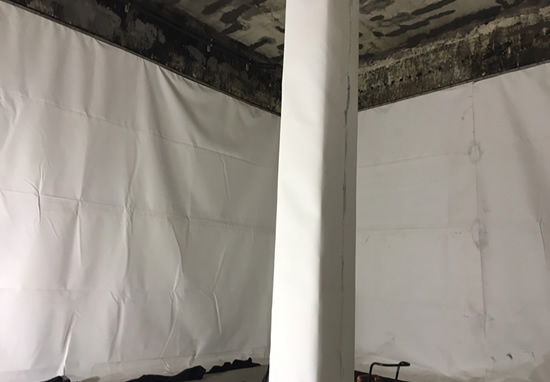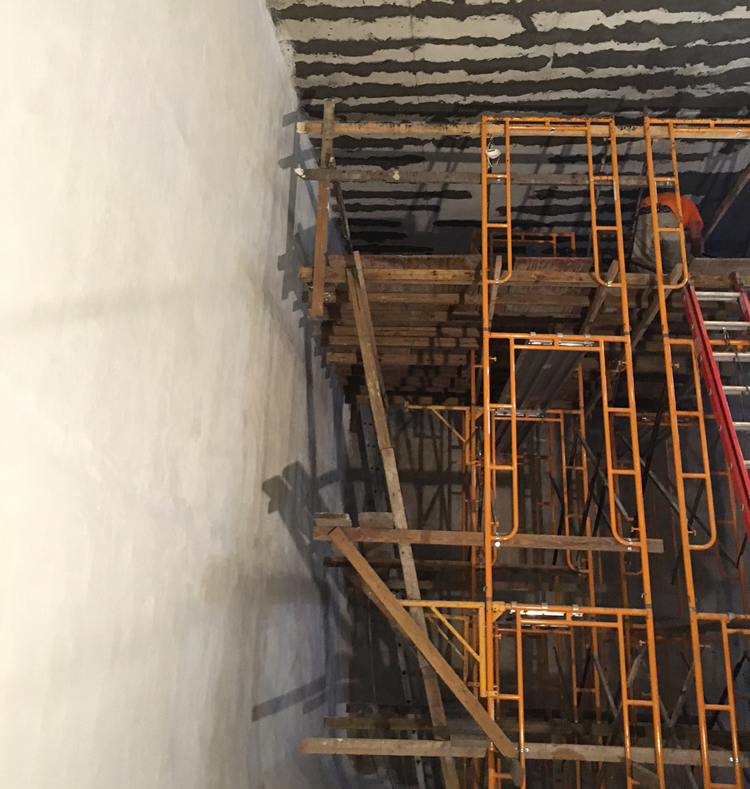

 The island of Saint Thomas in the US Virgin Islands is one of the Caribbean’s most popular and cosmopolitan destinations. When an aging lining system began to fail in a well-known resort’s cistern system, Colorado Lining International (CLI) was called in to replace the membrane with a CSPE geomembrane.
The island of Saint Thomas in the US Virgin Islands is one of the Caribbean’s most popular and cosmopolitan destinations. When an aging lining system began to fail in a well-known resort’s cistern system, Colorado Lining International (CLI) was called in to replace the membrane with a CSPE geomembrane.
The underground installation presented a number of challenges.
The vertical walls (16 ft.) of the cistern had a 3 ft. slope at the base, which required the installation of an anti-bridging bar. The site had only one entry point: a 3 ft. x 3 ft. opening on the roof, through which all materials needed to be lowered. Only a two-man crew, supported by local labor, was approved. The confined space (32 ft. wide x 71 ft. long x 20 ft. deep) included three support columns and a sump structure with an outlet.
Furthermore, the work had to be performed in less than two weeks and the island itself offered limited resources for construction.
SELECTING CSPE GEOMEMBRANE
The specification of the CSPE geomembrane for the site provided a true long-term solution. For water containment projects, such as underground cisterns and open air (or floating cover sealed) reservoirs, are utilizing CSPE for its long-term performance record. The material was used significantly in the 1980s, but as other geomembranes were marketed more, CSPE, which had fewer producers to push it in the marketplace, began to lose share. One major producer even exited the field.
Today, with numerous projects exceeding 35 years of in-service performance, CSPE geomembrane are again getting renewed attention all over the world, especially for water-related applications.
The underground cistern project for the upscale resort overlooking Morningstar Bay specified a 5-ply, 60-mil CSPE geomembrane from Burke Industries, an industry supplier of CSPE for more than 40 years, and a trusted supplier to CLI for over 25 years. It was selected as a replacement for a failed 60-mil PVC geomembrane that had only been in use for a few years.
The previously installed PVC material had failed at the seams due to incorrect welding—an incorrect adhesive had been used—and nothing was done at the sloped lower portion of the wall to prevent geomembrane bridging from the wall.
CLI’s approach with the CSPE geomembrane corrected these issues.
FROM COLORADO TO THE VIRGIN ISLANDS
CLI fabricated the CSPE geomembrane materials at its expansive facility and international headquarters in Parker, Colorado. The company also cut the 8 oz nonwoven cushioning geotextile rolls from 15 x 300 ft. down to 7.5 x 300 ft. This halving of material width enable the rolls to be shipped more efficiently to the location and to fit through the limited 3 ft. x 3 ft. opening into the cistern.
All fabricated products were shipped by common carrier to Miami, Florida. Tropical freight was then used to transport the geosynthetics to St Thomas.
In additional to the cushioning and lining rolls, CLI prefabricated CSPE sheets in Colorado that were big enough to wrap around the columns at the project site. The column wraps were designed to extend above the water level to prevent any possible intrusion into the column. Unreinforced CSPE “boot” fittings were also fabricated to facilitate easy joining of the column wraps to the main cistern floor liner.
The sump protection was fabricated on site.
As part of the installation and site works, CLI disinfected the cistern per AWWA C652-02 standards and added a mechanical attachment with rope hem at the 16 ft. mark on the vertical wall. This provided a watertight seal to prevent possible overflow from going behind the liner.
The project was completed on time and on budget, with the resort area continuing its operations.
Learn more about Colorado Lining International’s projects, services, and international activity at www.coloradolining.com.
PROJECT DETAILS
OWNER: DiamondRock Frenchman’s Owner Inc.
MATERIALS USED: 7,500 ft.2 of 60 mil CSPE geomembrane and 8,000 ft.2 of 8oz geotextile
PROJECT COMPLETED: June 2016











